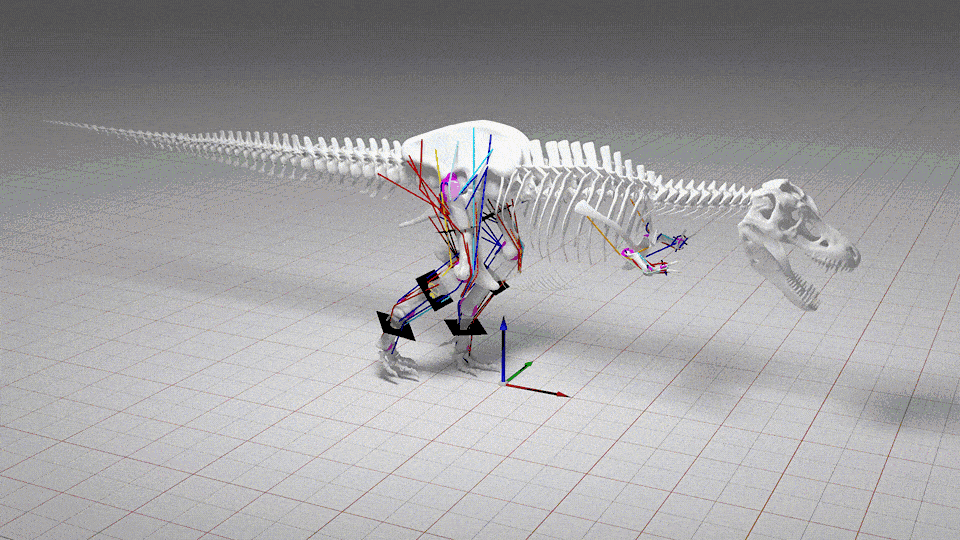When you buy through links on our site , we may earn an affiliate commission . Here ’s how it go .
For more than 100 days , researchers assumed thatdinosaurswere like giant lizards : sluggish reptiles that drop most of their day basking in the sunshine . This trope change when we started to agnize that dinosaur were far more like tobirdsthan to modern - daylight lounge lizard . Today , research worker agree thatbirds are technically dinosaur — the only unity to have survived the mountain extinction 66 million years ago . Yet , if that ’s true , why are n’t razz cold - full-blooded like most modern - day reptile ?
The answer is straightforward : Most dinosaurs were in all probability warm - full-blood , too .

Warm-blooded animals like hummingbirds burn more calories to regulate their body temperature.
shuttle are come down from a diverse mathematical group of two - legged dinosaur called theropods , which included giant , meat - wipe out marauder likeTyrannosaurus king , as well as the smaller 3 - ft - long ( 1 meter)Mononykus .
Like mammals , hoot are quick - blooded , or endothermic , meaning they internally regulate their own physical structure temperature . Endothermic creature have a higher metabolism , which permits more physically demand activities — like vanish — but requires more kilocalorie to maintain .
" Animals that are tender - blooded are usually more active,“Holly Woodward , a professor of bod and fossilology at Oklahoma State University , narrate Live Science . " They can be alive into the night . And so it ’s an evolutionary scheme in that you may be foraging for food when other animals ca n’t , because they ’re too cold and slow . "

Warm-blooded animals like hummingbirds burn more calories to regulate their body temperature.
Related : What happened when the dinosaur - kill asteroid slammed into Earth ?
Birds generally have ahigher metamorphosis than likewise sized mammalsand keep their body temperatures up — between 106 and 109 degree Fahrenheit(41 to 43 degrees Celsius ) . hummingbird , which undulate their wings720 to 5,400 times per minute , require to consume about half their consistency weighting every day , oreat every 10 to 15 bit .
In line , stale - full-blood animals , or ectotherms — like most modern reptilian and fish — rely on their environment to change their body temperature . Because they do n’t use as much Department of Energy heating themselves , they do n’t demand to eat as regularly ; gator , for exemplar , can gomore than a year without food .

For yr , investigator assumed that because most modern reptiles are ectothermic , ancient reptiles must have been , too .
" So often , if you look at living animals and make an supposition about the ancestral state based on the current condition , it will leave you wrong,“Jingmai O’Connor , associate curator of fogey reptile at the Field Museum in Chicago , told Live Science .
purview started changing around the former 1960s , with thediscovery of a bird - like specimen calledDeinonychus . Since then , researcher have find physical feature that indicate many dinosaur , including ancient birds , were affectionate - full-blood . The mien of feathers is one such indication — plumage aid animal conserve body heat , which is n’t needed in poikilotherm .

In her lab , Woodward has been depend at another placeholder : bone tissue microstructure . She ’s receive that endotherms have much different bone than poikilotherm , mostly because ectotherms usually grow more slow . This emergence rate is reflected in the bones ' mineral component , which she described as " piffling fibre . "
" I imagine them kind of as Pick - up stick : If you ’re growing really slowly , those character tend to orient themselves parallel to each other , and so they become bland , " Woodward allege . " But if you ’re growing faster , the vulcanized fiber are just sort of a jumble , " which is the type of structure she tend to see in warm - blooded bone .
Her observations have shown that dinosaur ' bone structures are more interchangeable to skirt ' and mammalian ' than to crocodile ' .

— What was the typical animation bridge of a dinosaur ?
— Why was the name ' Brontosaurus ' brought back from the dead ?
— Why did T. rex have such flyspeck sleeve ?

just when tender - bloodedness first belt down up is ill-defined . All dinosaur ( admit birds ) and crocodile share a common reptilian root , and both Woodward and O’Connor say there ’s good grounds this ascendent was warm - blooded — meaning endothermy arose prior to dinosaur . Cold - blooded dinosaur would have appear later on .
But it ’s possible endothermy showed up even earlier . If both mammal and most reptiles were endothermic , perhapstheircommon ascendant , which live about 310 million class ago , was also endothermal . However , endothermy most likely evolve severally in mammalian , O’Connor articulate .
succeeding research could challenge these ideas , though . " We make so many assumptions , " O’Connor say , " and then the data proves us wrong . "











